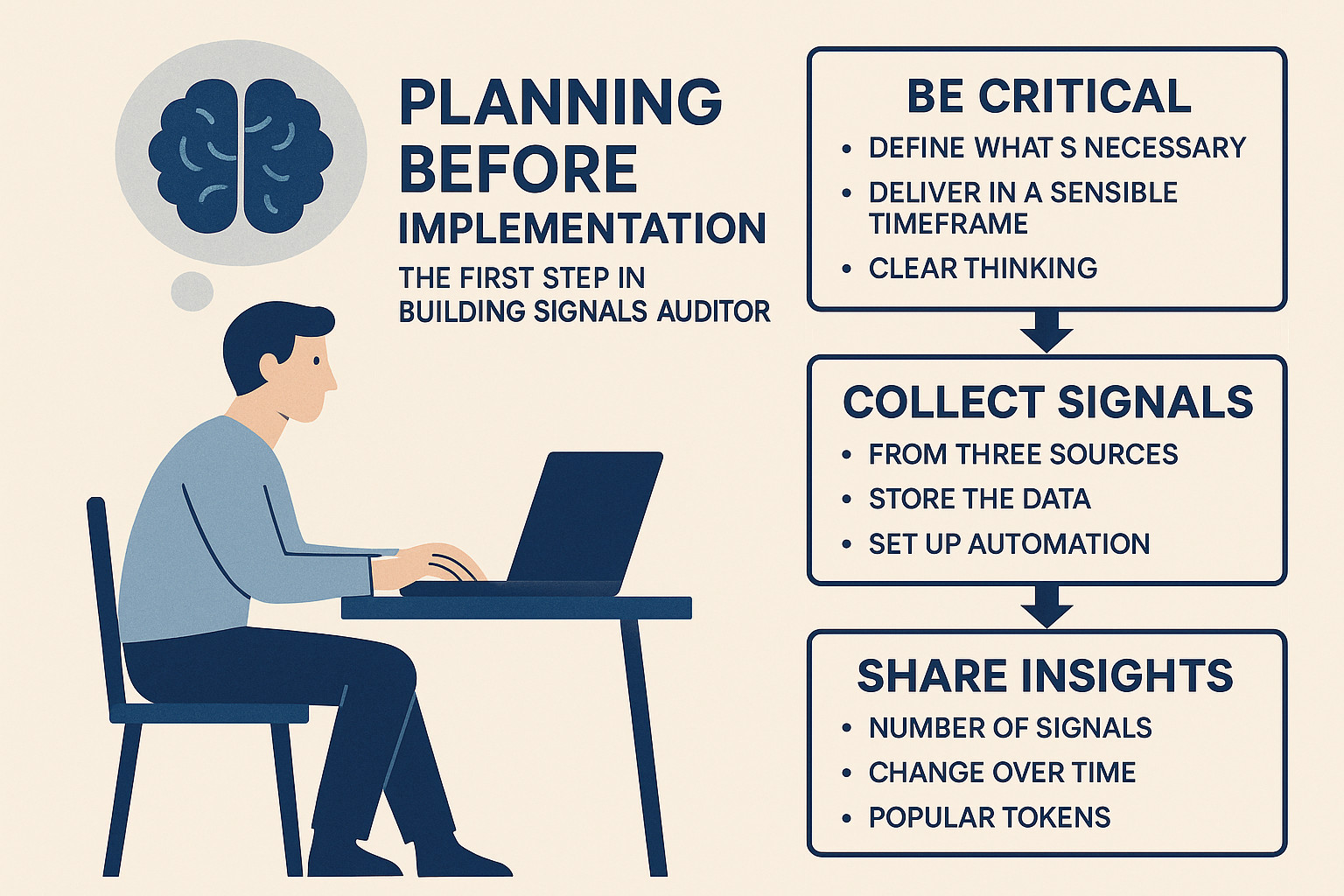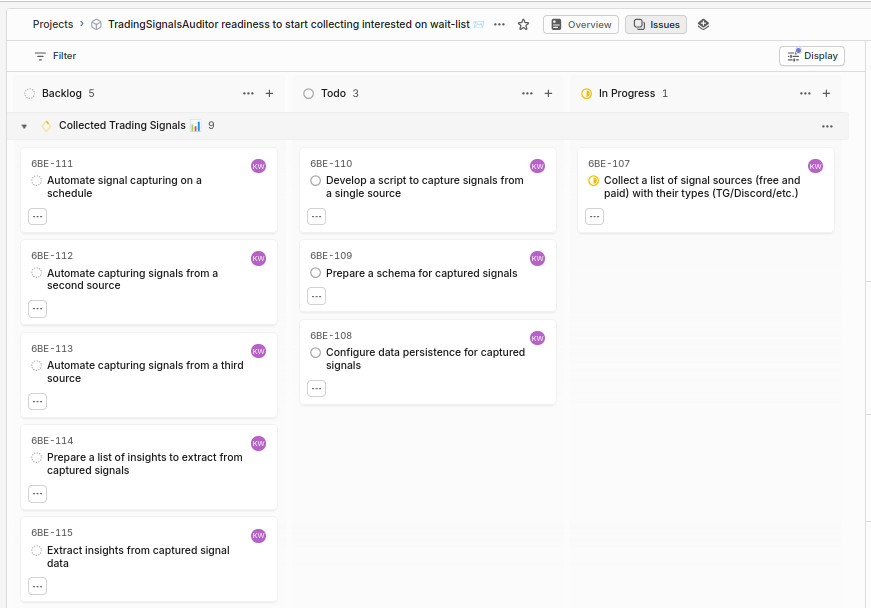
🧠 Why I Don’t Mix Planning with Implementation
During the planning phase, the most important thing for me is to be critical of my own ideas. I try to clearly define what’s truly necessary and what can wait. The goal isn’t perfection — it’s to plan actions that are realistic to deliver in a realistic timeline. This is not the moment for excitement — it’s a time for clear thinking and an honest assessment of what really needs to be done.
When I move to the implementation phase, I no longer analyze the decisions I’ve already made. I deeply trust myself from the time I planned the task. Thanks to this, I can focus all my energy on execution without constantly questioning the direction.
🛠️ What am I building now?
My goal at this stage is to collect trading signals from three sources. First, I need to choose these sources, then write scripts to handle them, store the data in a database, and finally — set up some initial automation for the whole process.
That’s why I’ve prepared a specific task list that will lead me to this goal.

- Collect a list of signal sources (free and paid) with their types (TG/Discord/etc.)
- Prepare a schema for captured signals
- Configure data persistence for captured signals
- Develop a script to capture signals from a single source
- Automate signal capturing on a schedule
- Automate capturing signals from a second source
- Automate capturing signals from a third source
- Prepare a list of insights to extract from captured signals
- Extract insights from captured signal data
💡 What did I discover during planning?
During planning, I noticed something interesting.
Even though my main goal for the first three milestones (described ✅ How I plan to validate Trading Signals Auditor idea in the real world) is to prepare the groundwork to start sharing results from analyzing trading signal group performance — it turns out that collecting the signals alone already allows me to share initial insights. For example, I can show how many signals each group generates, how that number changes over time, and which tokens appear most frequently.
This is a very valuable stage — I can start sharing this kind of data publicly as part of the process of building Signals Auditor. It might be the first point of contact with potential users and a good way to spark early interest in the product.
📌 What’s next?
Next steps include:preparing a list of signal groups I want to analyze, and implementing the first technical tasks from the backlog I’ve already planned. I’ll keep sharing progress updates — both here on the blog and through other channels, in the spirit of building in public.
